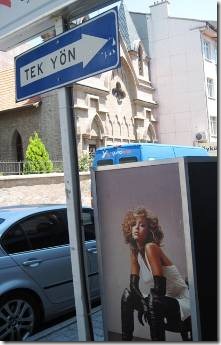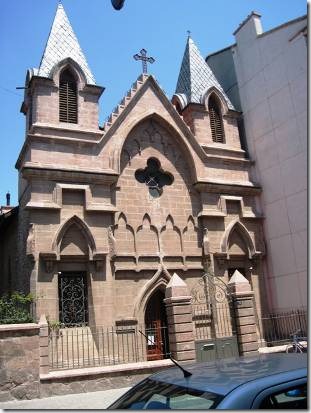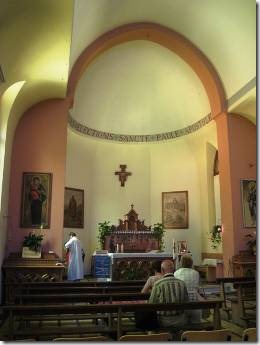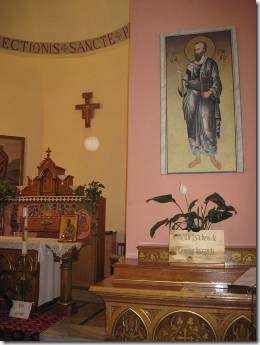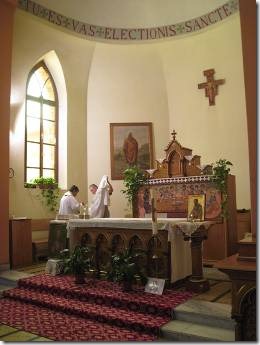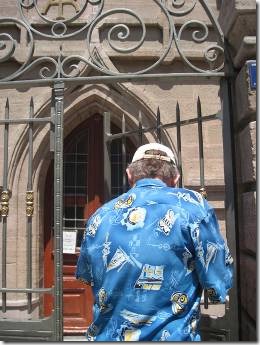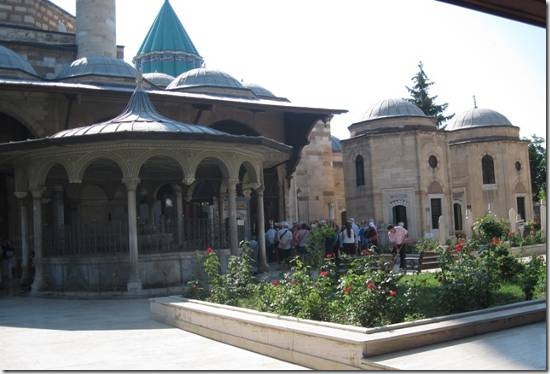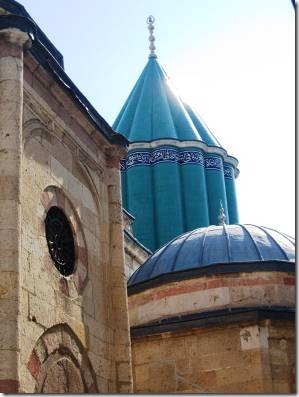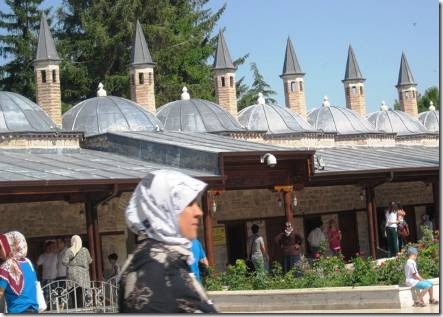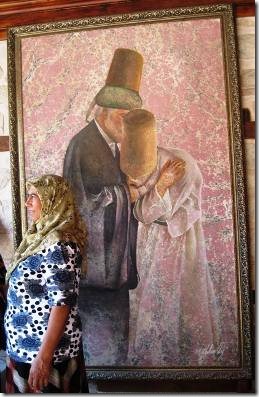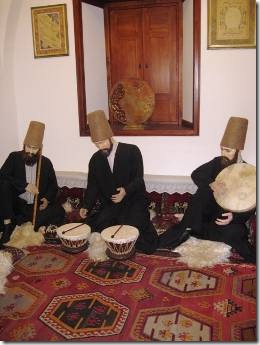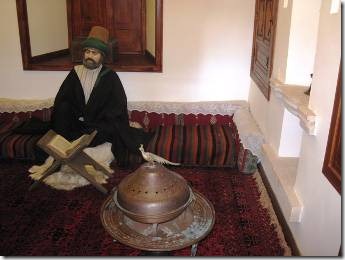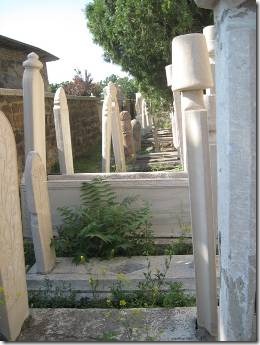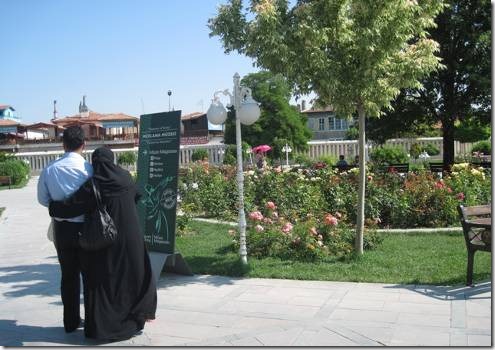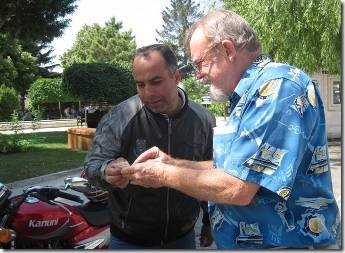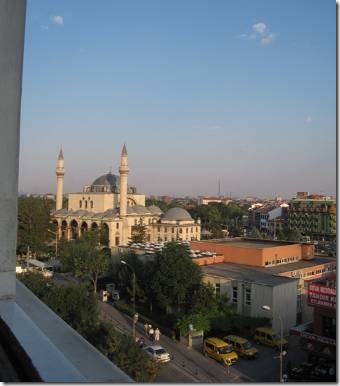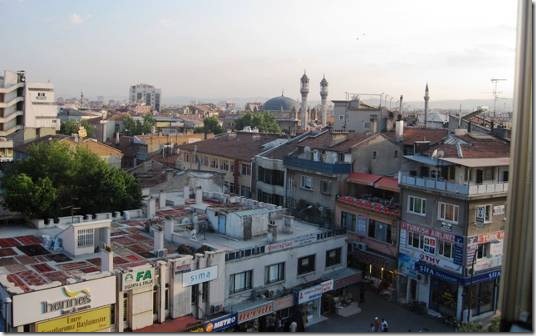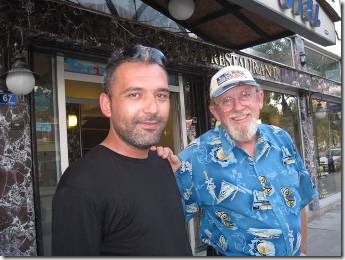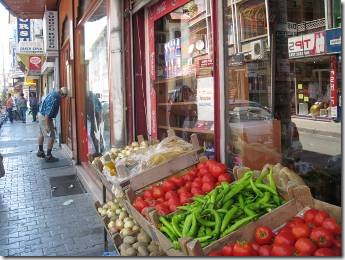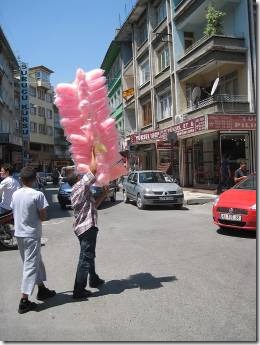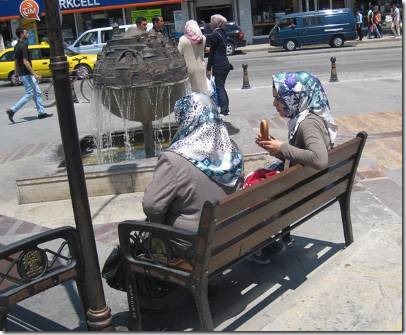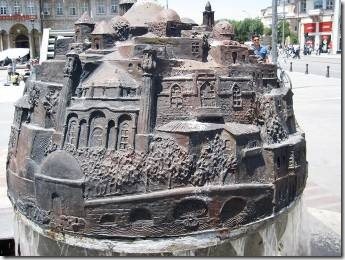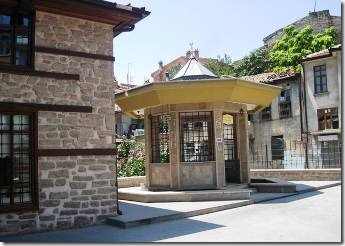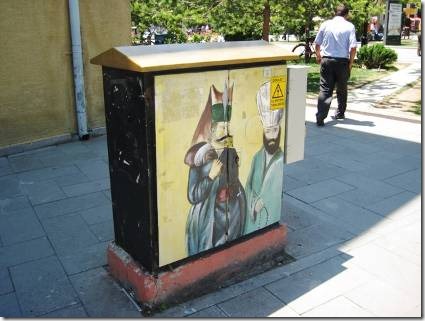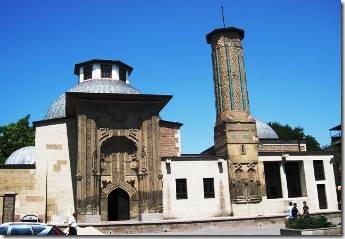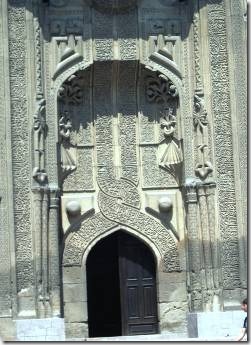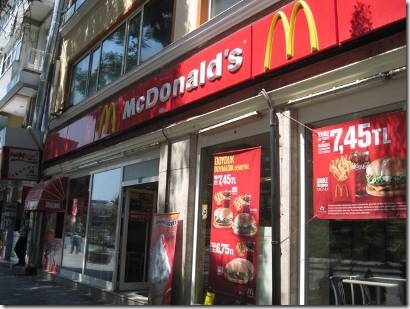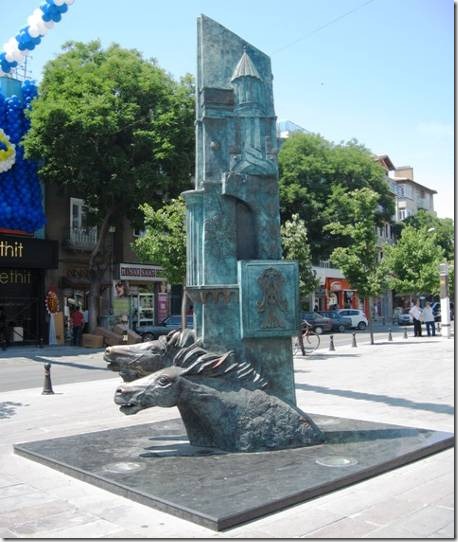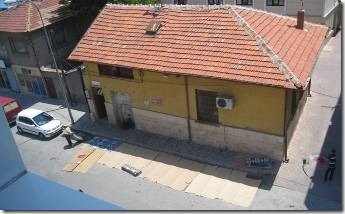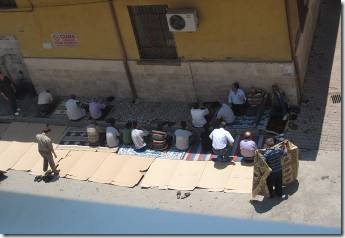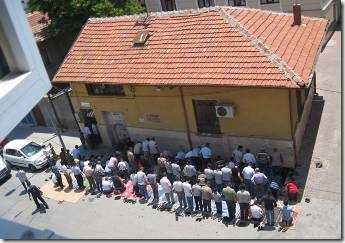I got so caught up in trying to explain my photos that I hope I’m not confusing things with too many facts. Do look at the 3D tour of the Mevlana Museum; you feel as if you are there. My next email after this will show the photos of the dervishes actually whirling..
Ru
DoraMac
St Paul Church, Mevlana Museum, and Whirling Dervishes
Randal’s brother-in-law administrates a retirement community in Lynchburg, but Ken is also a minister and all around great guy. I include visits to churches not just because they are interesting to me, but because I want especially to share them with Ken. So one of our stops in Konya was St. Paul’s Church, built in 1910
Our prior stop had been the Ataturk “closed for renovation” Museum so when we got to St. Paul Church and the gate was locked, I was none too happy. But as our mostly good luck would have it a “tour group” showed up and the gates were opened. Randal and I had no tour tag and we spoke an entirely different language but no one said not to, so we went in along with everyone else. And it wasn’t an official tour with a speaker (we wouldn’t have understood anyway,) but just a “wander around and take photos” stop for them. It’s a small, quiet church, not opulent and I don’t know why I picked it other than St Paul spent a good deal of time in Turkey and there is a long distance trekking trail that follows his path. And Reverend Ken.
Though described by Lonely Planet as the conservative “Bible Belt” (though it should be “Quran Belt”) here is a “non-conservative” ad across from a well cared for Catholic Church.
The gate was locked and the stone fence went all away around with no opening.
There is a sign on the door explaining something but it’s in Turkish so did us no good. When we are next in Turkey I will learn days of the week and hours of the day so we can figure out what signs are trying to tell us. (In August we’re moving to Northern Cyprus, then going home for about 3 months, and then back to Northern Cyprus for a few months and then probably to Israel so it will be a bit before we will need to know Turkish days of the week and hours of the day.)
About St. Paul
"During his first missionary journey across Anatolia, St. Paul came to Iconium (Konya), after having been chased away from Antioch in Pisidia (Acts 13:51). Its geographical position as a crossroads for major trade routes as well as its abundant water supply made Iconium the capital city for this region.
Here, St. Paul proclaimed the Gospel and a fervent Christian community was born. The Jews became divided over this message so St. Paul stayed some time, with the result that many believed. Eventually, under threat of his life he left the city but later returned on several occasions to encourage and exhort the people (Acts 14:1-6, 21).
The memory of St. Paul is still alive in Konya, thanks to a small church dedicated to him. This church was constructed in 1910 by priests "de l’Assomption" who came here to spiritually assist the families of the French community working in the region. St. Paul’s Konya Church is unique to this region as it is still standing after the passage of time, during which a large number of churches were demolished or turned into mosques when numbers of Christians decreased.
joined St. Paul as a companion during his journeys and later was made Bishop of Ephesus. Two of St. Paul’s letters to St. Timothy are included in the New Testament.
Now this small church, with its French Gothic facade, offers hospitality to groups of pilgrims travelling the paths of St. Paul in Anatolia, thanks to the concern and oversight of the Bishop of Izmir/ Konya and to the presence of two resident Sisters from the "Fraternity Resurrected Jesus" in Tavodo, Trento, Italy. Today’s small community of Catholic Christians gathers here once a week to pray….."http://www.cinquepani.it/Casa_frat/Konya/inglese.htm
(I have no idea how accurate this is, but hopefully most of it is.)
http://www.lycianway.com/StPaulContent/aboutthewalk.html A website describing the St. Paul Trail in Turkey and a brief survey of Paul’s history in Turkey.
Religious tourism is a growing industry in Turkey. When we thought about walking part of the St. Paul Trail while in Egirdir, I looked up info on the web and saw lots of tours offering people the chance to follow Paul’s walk in Turkey.
http://www.traildino.com/trace/continents-Europe/countries-Turkey/trails-St_Paul_Trail This seemed a really interesting web site for people who like to hike or “trek” as it’s called around the world.
The Church interior was simple.
I think the tour group members were German or Dutch and they pretty much ignored us. We stayed for a bit, then walked out into the small garden and finally let ourselves out of the gate and went off to find lunch.
We visited St Paul Church in the afternoon. That morning we had been to see the Mevlana Museum.
Melvana Museum
Konya is most famous for being the home of the Whirling Dervish Order. I had gotten really interested in dervishes while in India, but Turkey, and Konya specifically, is where it all began. We hadn’t planned to be in Konya on a Saturday, but luckily were and every Saturday night there is a free dervish performance at the Mevlana Cultural Center. So we started the day and ended it with the Whirling Dervishes. Mevlana means “Our Guide” and was the name given to the 13th century poet/mystic philosopher Rumi (1207-1273) whose followers made up the order of dervishes. (Rumi’s birth name was Mohammed Jalaladdin. The name Rumi, meaning Anatolian, was also given to him by followers.) Rumi’s son, Sultan Veled, organized Rumi’s followers into the brotherhood called Mevlevi, or whirling dervishes. Believing dervish philosophy too conservative, superstitious and an obstacle to modern advancements, Ataturk banned them in 1925. “The Konya lodge was revived in 1957 as a ‘cultural association’ intended to preserve an historical tradition.” Lonely Planet
“The earthen graves of Mevlana and his father were covered soon after with a lavish shrine, and a takiyya was built around the tombs to house the Mawlawi brotherhood. Rebuilt and enlarged over the Karamanid and Ottoman periods, the takiyya (dergah or tekke) in Konya functioned as the center of Mawlawi teaching until 1927, when it was closed down by a new Turkish law banning the operation of takiyya and zawiyas. It was re-opened two years later as the Konya Museum of Antiquities, and renamed Mevlana Museum in 1964 with the introduction of new exhibits conveying the daily life of dervishes. The historic neighborhood around the complex, including wooden mansions of the Çelebi (leaders of the convent) to the north of the convent, was demolished in the mid-twentieth century to create parklands around the museum and the adjoining Selimiye Mosque (1566). The complex was extensively restored between 1983 and 1987” http://archnet.org/library/sites/one-site.jsp?site_id=7563
ArchNet is supported by the Aga Khan Trust for Culture, an agency of the Aga Khan Development Network and is currently based at the Massachusetts Institute of Technology. In January 2012, the Aga Khan Trust for Culture will take over responsibility of the site, with the exception of the Digital Library, which will be curated by the MIT Libraries.
The museum opened at 9 am so we got there a bit before and first got into the wrong ticket line so had to start over. (My wrong line was for renting audio cassettes which we didn’t want but you couldn’t buy general admission tickets in that line so I had to move to the end of the other line.) Admission was 3 TL per person, Turk or tourist so quite reasonable and much less than comparable sites in Istanbul. With today’s exchange rate that’s a bit less than $2 per ticket. The huge tour bus groups hadn’t arrived yet but there were still several hundred people there. Unfortunately no photos were allowed in the tomb. On the plus side plastic shoe covers were provided so you could wear your shoes inside.
http://www.3dmekanlar.com/en/mevlana-museum.html is a great website that lets walk through the museum (really mostly a tomb) for Mevlana, his father and some followers. I found it quite beautiful with all of the colorful tiles. There was soft music playing. Many people stopped to pray at the tomb. You felt as if you needed to speak in soft whispers ….and move along…which was too bad because it was something I could have looked at for a while.
Outside the museum/tomb is an “ablution fountain” for washing before praying. Originally built in 1502, the fountain’s roof was demolished in 1932 and reconstructed in 1990.
The “Green Dome”
“Today the Tomb rests on arches supported by four pillars, and is 25 m. in height. From the outside the body of the tomb is cylindrical in shape with 16 sections. It ends at the top with stone cornices, above which is a 16-sectioned conical spire. The whole tomb including the spire is covered with turquoise colored tiles. The tiles were replaced from time to time. For this reason it was called the Green Dome. On the side of the Dome in dark blue script are inscribed the Besmele and Ayet-ul-Kursi. On the top of the spire is a gold moon and star symbol.” http://www.istanbulportal.com/istanbulportal/Konya1.aspx
The row of dervish cells.
“There are 17 small cells, each with a small dome and chimney around the west and north sides of the front court of the Mevlana Lodge. These cells were built by Sultan Murat III to house the dervishes in 1584. At the end of the row to the left of the photo is a huge painting of a dervish and dervish master. I really liked it but gave up trying to get a clear photo because everyone wanted to pose in front of it. Interestingly we saw that interaction of master and dervish at the performance later that evening.
Wax recreations inside the dervish cells.
We also saw the musicians at the evening performance.
Mevlevi (Mawlawi) gravestones: there were several variations on the spelling of Mevlana.
Gardens surrounded the complex.
Most women, though they covered hair, arms, and legs didn’t dress this conservatively. And shops all around town sold sundresses, shorts, bathing suits, etc.
Next email "the whirling dervishes."

